John Baeder
John Baeder’s calculated and nostalgic renderings of “classic Americana” theme-diners have brought him great appeal and success both as painter and printmaker.
His subjects have been almost exclusively isolated roadside diners and eateries. That an artist can concentrate so masterfully on one theme enticed Abrahms to publish ” Diners by John Baeder” in 1978
“In Photo-Realism, reality is made to look so overpoweringly real as to make it pure illusion: through the basically magical means of point-for-point precisionist rendering the actual is portrayed as being so real that it doesn’t exist.”
† Gerrit Henry “Super Realism: A Critical Anthology” (Dutton 1975)
Baeder’s subjects have been almost exclusively isolated roadside diners and eateries. That an artist can concentrate so masterfully on one theme enticed Abrahms to publish “Diners by John Baeder” in 1978. “In Photo-Realism, reality is made to look so overpoweringly real as to make it pure illusion: through the basically magical means of point-for-point precisionist rendering the actual is portrayed as being so real that it doesn’t exist. What does exist off the canvas is the mind, which conceived of the idea of the painting of a photograph of reality, in all its intrinsic implausibility. Whereas classical painters through the ages have idealized reality itself, the “classical” New Realists have totally devalued reality in order vastly to overvalue (in other words, completely abstract) the human brain.” Gerrit Henry , “Super Realism: A Critical Anthology” (Dutton 1975).
Biography: Baeder studied at Auburn University in Alabama. His subjects have been almost exclusively isolated roadside diners and eateries. That an artist can concentrate so masterfully on one theme enticed Abrahms to publish ” Diners by John Baeder” in 1978
Résumé: Collections include: American Telephone and Telegraph; Amerada Hess Corp;Whitney Museum of American Art, NY;Denver Art Museum; Museum of Modern Art; Detroit Institute of Arts; Rhode Island School of Design;Newark Public Library; Springfield Art Museum, Missouri; Yale University; Ivan C. Karp, NY;
Statement:
“Various facets of life become vehicles for liberating the soul.” “When I was five years old I began traveling with my parents and sister to Chicago by train. From Chicago we went to South Bend, Indiana by inter-urban transit. The “South Shore” which historically was the last inter-urban train to run in America, ceased operation in the early seventies. These trains provided the stimulus of visual ecstasy. This was the beginning of early sensory experiences that immersed themselves deep into my unconscious, later on providing seeds for the conscious, and they then blossomed and became art.”
“On the train the dining car was more than just an eating locale, it was compounded with the fulfillment of looking out the window of our “drawing room” and soaking in the countryside and the backyards of small towns and communities. For my tiny tender eye, these were paintings, framed by large windows. My first museum.” “During the same early period, due to housing shortages we lived in a hotel for six months. Across from the “Biltmore” in Atlanta, Georgia was the “Majestic”. It was an eatery with a counter, but not a diner in the traditional, pure, bonafide sense. It had short stools and I was enthralled sitting on those stools with all the grown-ups and was more thrilled by observing with complete and clear amazement the choreography of the counter-man preparing food so swiftly on the grill in front of me. I couldn’t tear my eyes away from the twists and turns of the wrist flipping burgers and flopping toast; the opening and closing of the polished metal doors; and of course the magical one-hand-egg-breaking routine. I loved it all. It was entertainment in a spiritual area I knew nothing about. More visual joy for the little boy and his beginning sensibilities that were later redefined and redistributed on canvas.”
“I am concerned with process: the revelation of a particular and poignant part of the urban landscape, and thus the preservation of a unique and rapidly disappearing icon of American roadside culture. (Take from culture in one dimension and contribute back in another dimension.) A significant aspect of the process is the quest, which basically is the transformation of documented archaeological findings,travel, investigation and gathering of material. The painting is the mere act of transcendence, an end product that enters space and time; the final leg of the quest.” John Baeder, 2000
Additional Information: Born: 1938 Birthplace: South Bend, Ind, USA
Showing all 8 results
-
Sale!

John Baeder Berkshire Diner 1980 Signed Limited Edition Silkscreen on Somerset paper
Original price was: $1,000.00.$750.00Current price is: $750.00. Add to cart -
Sale!

John Baeder Caseys Diner 1980 Signed Silkscreen on Somerset paper
Original price was: $1,000.00.$750.00Current price is: $750.00. Add to cart -
Sale!

John Baeder Lisi’s Pittsfield Diner 1980 Signed Silkscreen on Somerset paper
Original price was: $1,500.00.$750.00Current price is: $750.00. Add to cart -
Sale!
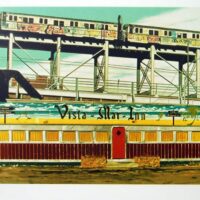
John Baeder Vista-Mar-Inn 1980 Signed Silkscreen on Somerset paper
Original price was: $1,250.00.$750.00Current price is: $750.00. Add to cart -
Sale!
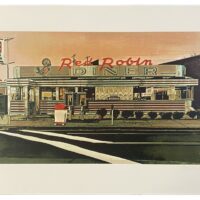
John Baeder Red Robin Diner 1980 Signed Silkscreen on Somerset paper
Original price was: $1,500.00.$750.00Current price is: $750.00. Add to cart -
Sale!
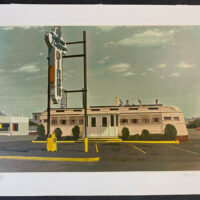
John Baeder Yankee Clipper Diner 1980 Signed Silkscreen on Somerset paper
Original price was: $1,500.00.$750.00Current price is: $750.00. Add to cart -
Sale!
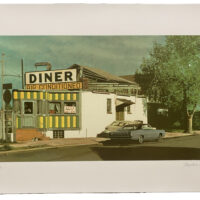
John Baeder Royal Diner 1980 Signed Limited Edition Silkscreen
Original price was: $1,000.00.$750.00Current price is: $750.00. Add to cart -
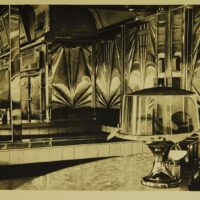
John Baeder Interior Curly’s Diner 1979 Art Lithograph Mezzotint Signed
$1,000.00 Add to cart
